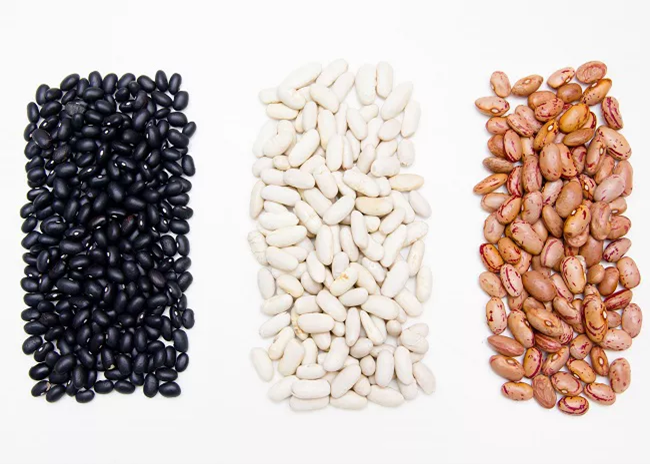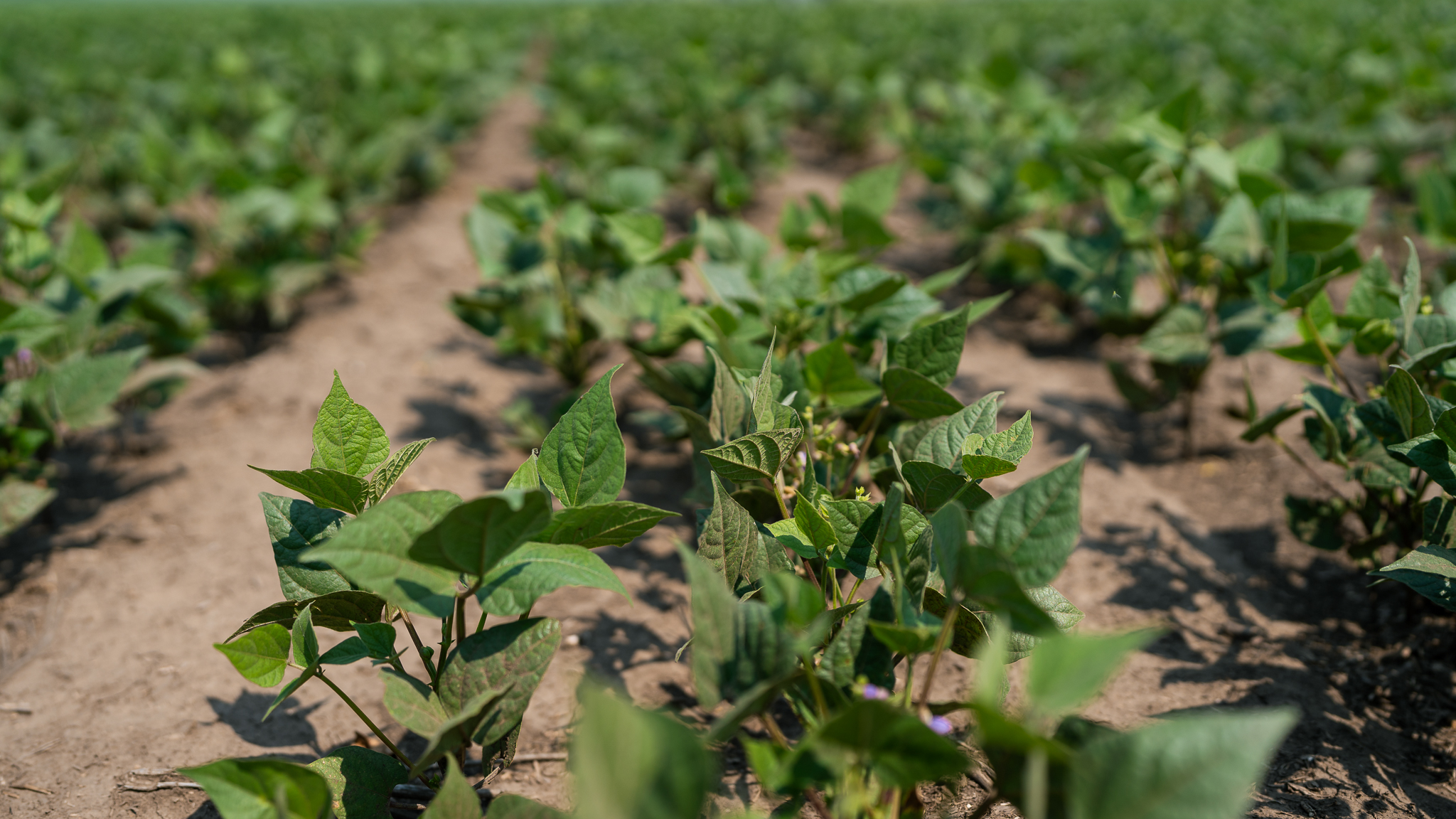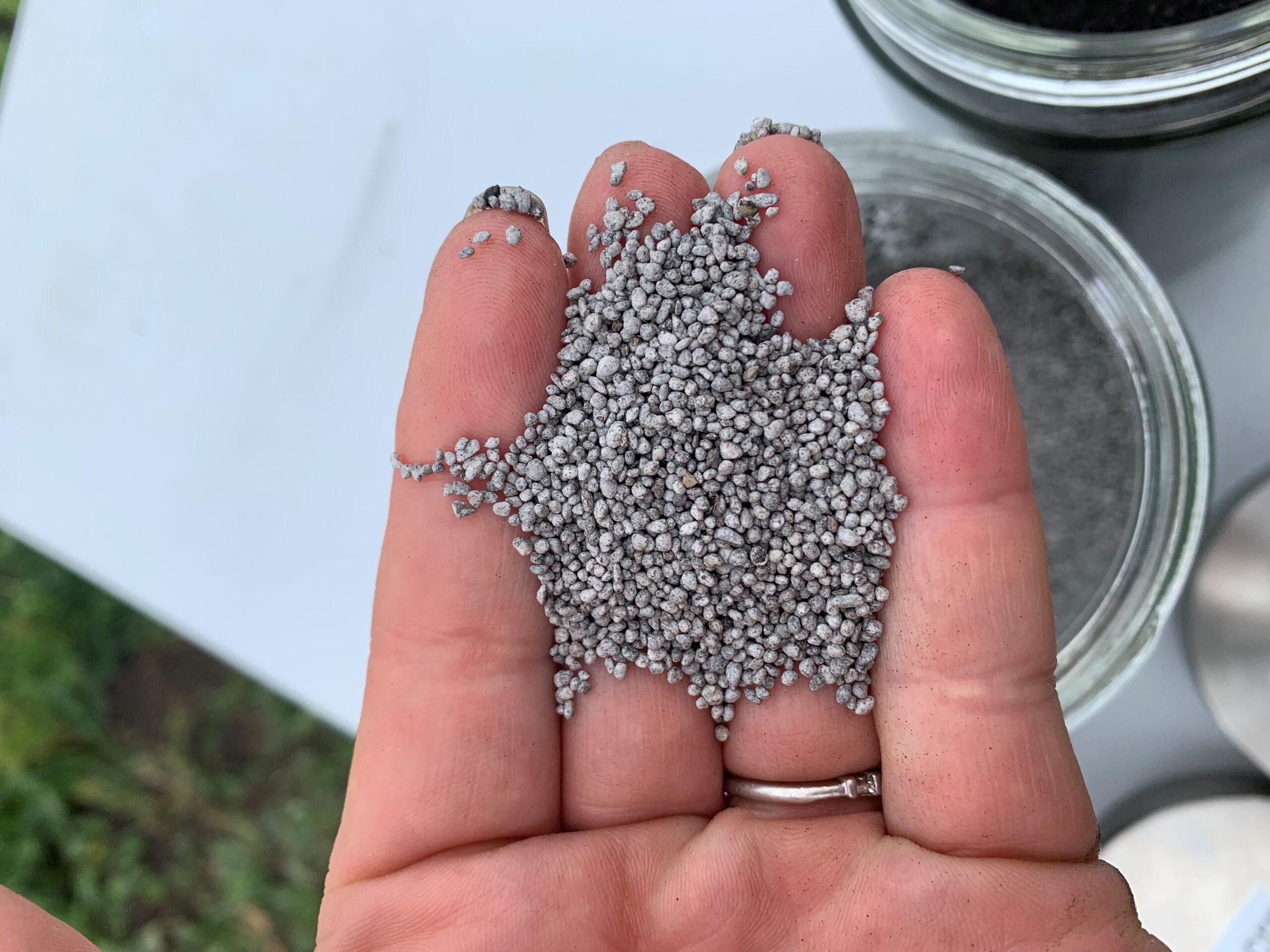Background
Dry beans are specialty pulse crops, with pinto, navy, and black beans being Saskatchewan’s most commonly grown varieties (fig 1). In 2024, Saskatchewan growers seeded approximately 318,000 acres of the crop, down 4.8% from the year prior (Statistics Canada, 2024).
Dry beans can be grown under irrigated or non-irrigated (dryland) conditions. In Saskatchewan, dryland dry bean production is more common. Dry beans are most suited to Saskatchewan’s central and eastern growing regions.

Much of the information available to growers about dry bean production comes from the northern and central United States and Manitoba. While dry bean production in Saskatchewan remains relatively small in scale compared to the output of other pulse crops, there is much growth potential. Local growers would benefit from regionally appropriate nutrient guidelines for the crop to inform crop management decisions better and ensure productivity.
Nutrient Demand, Uptake & Removal in Dry Beans
Nutrient Demand
Like other pulse crops, dry beans fix some nitrogen via biological fixation. However, dry beans tend to be poor nitrogen fixers compared to pulse crops like lentil, pea, or chickpea, and therefore require additional N amendments, most often through the application of synthetic fertilizers.
An Agriculture and Agri-Food Canada (AAFC) study in Saskatchewan found increased dry bean yields when N fertilizer was applied at rates between 22 and 67 lbs/ac alongside a rhizobial inoculant (Government of Saskatchewan). The Saskatchewan Ministry of Agriculture recommends applying starter N fertilizer at a rate of 50 lbs/ac for dry bean. A controlled environment experiment comparing the early season biomass response of six pulse crops (lentil, pea, chickpea, soybean, black bean and faba bean) to starter N, P, and S fertilizer products applied in seed-row showed that black bean and soybean were most responsive (Dona et al. 2020).
Phosphorus is important for dry bean production, and, with generally low soil P levels in Saskatchewan, P amendments are often required when growing dry bean.
Zinc deficiencies may arise in some dry bean varieties, more commonly in navy beans. While Zn levels are generally not of major concern in Saskatchewan soils, soil testing is advised to take inventory of soil nutrients and address issues when necessary.
Dry bean is highly sensitive to seed-placed fertilizers. Varieties vary in tolerance, and recommendations for maximum seed safe rates vary across provinces and market classes. A general recommendation is not to place any fertilizer with the seed and to either broadcast & incorporate side band or mid-row band all fertilizers.
Nutrient Uptake & Removal
Research out of Manitoba found that the highest rates of nutrient uptake in dry bean occur between the R1 (flowering) and R7 (beginning maturity) stages (fig. 2). Macronutrients are removed via dry bean crops at a moderate level. They should be monitored to ensure adequate nutrition for succeeding crops (table 1).

Table 1: Estimated nutrient removal rates by a dry bean crop based on an 1800 lb/ac yield (Heard & Brolley, 2008).
| Nutrient | Removal (lbs/ac) |
| Nitrogen (N) | 54 – 63 |
| Phosphorus (P2O5) | 20 -25 |
| Potassium (K2O) | 34 – 38 |
| Sulfur (S) | 4 |
Summary
For a successful dry bean crop, growers should apply a dry-bean-specific rhizobial inoculant and additional nitrogen fertilizer (approximately 50 lbs/ac). That said, dry bean inoculant is harder to come by than pea/lentil. Removing the inoculant and relying on supplemental fertilization may be more economical for some farms. The highest rate of nutrient demand in dry bean occurs between flowering and early maturity, so nutrient demands should be met before this, whether through nutrients already present or mineralizable from the soil organic matter, or through applying fertilizers.
Soil samples should be tested before growing dry beans to understand the nutrient profiles in the fields where dry beans are intended to be grown.
While dry bean acres remain relatively low throughout Saskatchewan, interest in rotation diversification and pulse production appears to be growing in recent years. As such, continued research on dry bean production in Saskatchewan is underway.
References
- Government of Saskatchewan. N.d. Dry Bean Narrow Row Production: Fertilizer Considerations. https://www.saskatchewan.ca/business/agriculture-natural-resources-and-industry/agribusiness-farmers-and-ranchers/crops-and-irrigation/field-crops/pulse-crop-bean-chickpea-faba-bean-lentils/dry-bean-narrow-row-production/fertilizer-considerations
- Dona., W.H., Schoenau, J.J., and King, T.. 2020. Effect of starter fertilizer in seed-row on emergence, biomass and nutrient uptake by six pulse crops grown under controlled environment conditions. Journal of Plant Nutrition. 43 (6): 879-895.
- Heard, J., and Brolley, B.. 2008. Nutrient uptake and partitioning by dry beans in Manitoba. Agronomists Conference Proceedings.
- Statistics Canada. 2024. Principal field crop areas, June 2024. https://www150.statcan.gc.ca/
n1/en/daily-quotidien/240627/dq240627b-eng.pdf?st=UAer0Cm0



